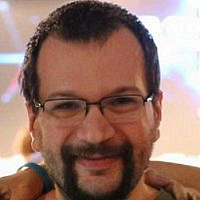Andras Iklody is a software developer working for CIRCL and has been the main developer of the MISP core since the beginning of 2013. He is a firm believer that there are no problems that cannot be tackled by building the right tool. He did the overall development governance in the MISP core project especially to ensure external contributions are inline with the overall objective of the MISP core functionalities.
Sami Mokaddem (male) is a civil engineer graduated from the Université catholique de Louvain (UCL). He is the lead developer of the situational awareness tool called misp-dashboard used for the MISP threat intelligence platform.
In a continuous effort since 2016, CIRCL frequently gives training sessions about MISP (Malware Information Sharing Platform & Threat Sharing). The purpose is to reach out to security analysts using MISP as a threat intelligence platform along with users using it as an information-sharing platform. This is an opportunity for the users to meet the developers and exchange about potential improvements or use-cases using MISP as a threat-intelligence platform.
The MISP training will demonstrate how the platform functions; explain how to share, comment and contribute data, and describe the future developments. This part of the training focuses on the analyst aspect along with the management of your own MISP instance especially how to connect to other MISP communities.
Prerequisites:
As this is a technical workshop, attendees can bring their own laptop to the course.
Who benefits most from this training:
Everyone interested in the concepts, administration, maintenance, usage and API usage of MISP.
Requirements:
More information about MISP: https://www.circl.lu/services/misp-malware-information-sharing-platform/
About the MISP project: https://www.misp-project.org - https://twitter.com/MISPProject
More information on MISP training: https://www.circl.lu/services/misp-training-materials/
November 14, 2019 09:00-10:30, November 14, 2019 11:00-12:30, November 14, 2019 13:30-15:00, November 14, 2019 15:30-17:00





